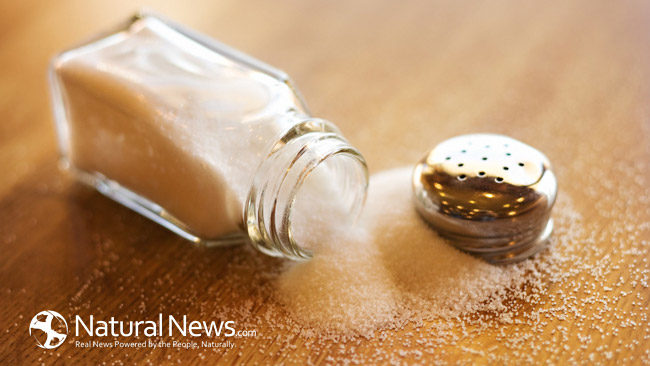It’s no secret. The vast majority of fast and prepared foods are not the healthiest or most nutritious choices for your diet.
What might be a secret is exactly why they are not so good for you. When most of us think of fast food, we think of extra fat, cholesterol and calories. You can almost feel your arteries clogging as you tuck into that Big Mac.
But, while a Big Mac Meal has a belt-tightening 50% of the recommended daily intake of calories, it also has 90% of the recommended daily intake of sodium.
The Good News About Salt
As an essential nutrient, you need sodium. (Salt is the common name for sodium chloride, the main source of sodium for your body.) Sodium helps balance the fluid levels in your body and it helps maintain proper muscle function, which means that, without it, your heart would literally stop working.
But your body doesn’t make its own sodium, so you have to get it from the salt in food you eat.
More Good News: We don’t need huge quantities of sodium; less than a teaspoon a day. And sodium doesn’t just make food taste salty; it also helps foods smell better and reduces any bitterness in their flavor.
Here Comes the Bad Part
Food manufacturers and fast food franchisers know how much you like salt. They also know their products would not have an appetizing aroma and would have a more bitter taste without salt. What’s more, their drink sales would shrink. The extra salt in their food tells your body to compensate with more fluid.
So, from their point of view, it makes sense to add lots of sodium to their products.
The result is that, on average, we consume over 50% more sodium than we need every day. So the problem isn’t sodium, but how much of it we consume.
High sodium intake is linked to increased risk of:
- Heart attacks and heart failure
- Higher blood pressure
- Stroke
- Kidney Disease
- Dementia
And Now it Gets Ugly
How much extra sodium is there in fast and prepared foods? First, it’s important to note that public and private health organizations in North America, including the American Heart Association, the American Diabetes Association and Health Canada, generally recommend that salt consumption be limited to between 1500 milligrams per day and should not exceed 2300 mg per day.
The average North American consumes 3400 mg of salt per day.
The problem becomes ugly because salt sneaks into your diet in foods that you generally don’t consider ‘salty’. According to the Herbal One three part series ‘Slash the Salt’, here are a few examples of such foods:
Restaurant Cheesecake – Who can resist dessert? And who would ever suspect it’s packed with salt? One dessert item, Tortilla Cheesecake, on the menu at Montana’s, a Canadian restaurant chain, has 1,270 mg of salt.
Campbell’s Healthy Request Clam Chowder – The package tells a good story – it’s low in sodium. But check the nutrition label. At 480mg, this ‘low sodium’ item has almost one third or the recommended daily intake in a single serving – It gets uglier: There’s more than two servings in a single can of soup – that’s over 960 mg of sodium, or almost two-thirds of the recommended daily intake, in one can.
McDonald’s Happy Meal – Extremely high levels of sodium lurks even in the food we feed our children. The recommended daily intake of sodium for children is lower than that for adults. Health Canada recommends 1200 mg per day.
We examined a fairly healthy Happy Meal that included a Chicken Snack Wrap, Apple Slices and Caramel Dip, Partly Skimmed Milk and Yogurt.
That Happy Meal has 830 mg of salt or over 66% of the daily recommended intake. In a single meal that otherwise would be considered a healthy choice.
If you’re concerned with your level of sodium consumption, you need to pay more attention to nutrition labels on food packages and nutrition information posted by restaurants. And the only way to have total control of how much salt you eat is to make more of your meals.





